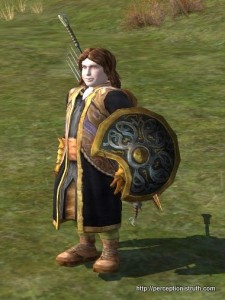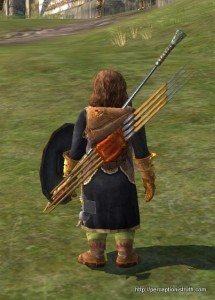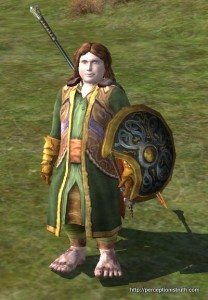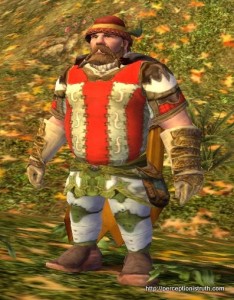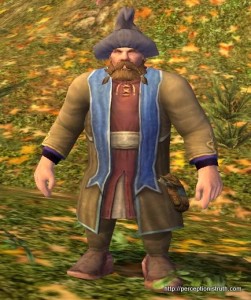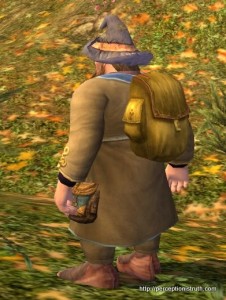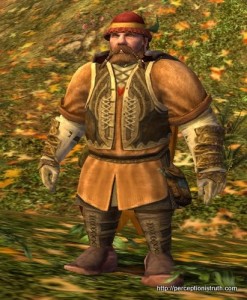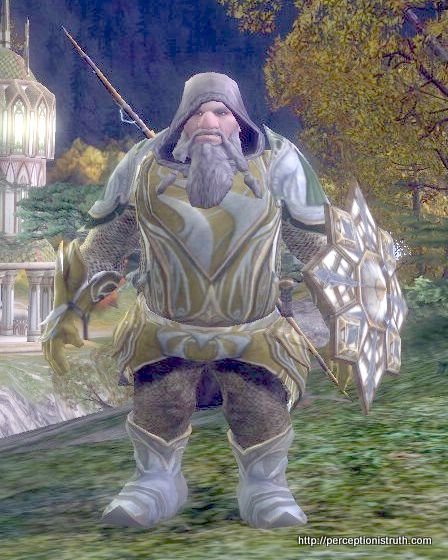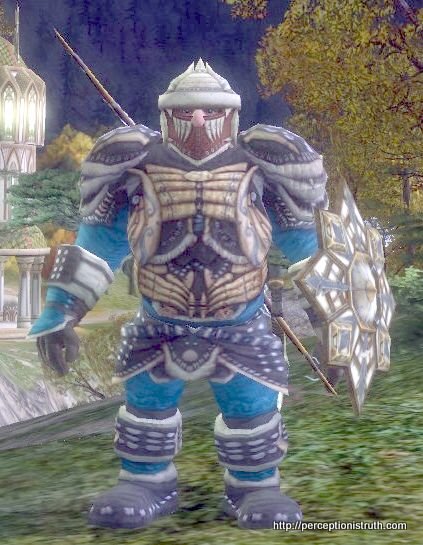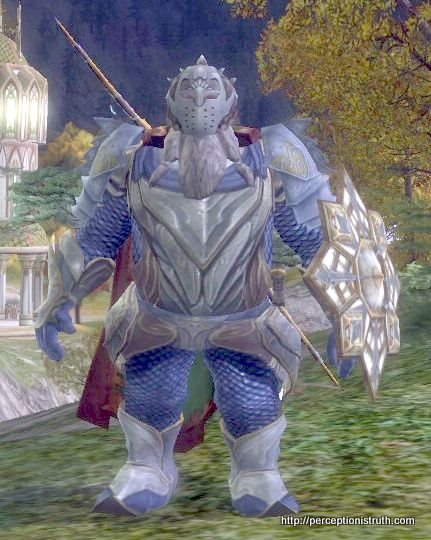This turned into a bit of a rambling piece – so I thought I’d add this paragraph at the top. I wanted to write something to compare the difference between helping friends catch up in levels within EverQuest and Lord of the Rings Online. This is it. Oh, additionally I’m helping one or two friends level in LotRO at the moment (one new player, one player with a high level toon already). This post is not a complaint, I’m happy helping them, this is just a comparison.
One of the major differences between the old guard of EverQuest and the new guard (if they can be called that now) in online gaming, WoW, Lord of the Rings Online etc. is the source of experience points, used to increase levels. In EverQuest the primary source was and still is killing enemy creatures. If you wanted to gain levels you went out and killed stuff. There were quests in EQ (the name kind of implies it), but they had nothing like the structure or managed-activity that quests in more modern games possess. And they didn’t give anything like the same amount of experience points.
If you had to collect some orc bracers for a quest, you got most of the experience from the killing, and a tiny amount from the quest itself. Note: there were some variations to this, in some cases handing in rewards from quests gave you a nice little boost of XP, but as you levelled past the early teens that kind of thing vanished.
EverQuest finally evolved a task and quest system, which tried (but ultimately failed) to mirror that present in games like WoW and LotRO. However even with that addition the primary source of XP was killing stuff; the quest might get you somewhere, might give you a reason to kill them, but grinding out levels and AA (alternate abilities) meant killing hundreds and thousands of creatures. There was also a strong mantra of not rewarding risk-free actions. If you could do something without risk, EverQuest either quickly added risk or removed the reward.
This is not the case with Lord of the Rings Online (I’m more familiar with that game than WoW). Most of the XP you obtain while you’re levelling is from quest and deed rewards. Killing a few creatures might net you a thousand XP, completing a single quest might net you 4,000 XP. That quest might include collecting flowers or defending someone from a few creatures. The non-XP rewards (items, etc.) are more likely to be restricted to higher risk higher effort quests, but actual XP is given out pretty freely. It scales of course, you get more XP later on than you do early on, and there are some long-ass quests which give out the same XP as some very quick quests. But the point is, the killing is a side activity. You don’t see people going out and grinding by just killing stuff to get levels. You can do, but it takes longer than it would to go to a new area, get 15 quests and burn through them. Quests in LotRO are level restricted, you need to be within 5 levels of them to pick them up (i.e. if you’re 37, you can see quests up to level 42). This helps ensure people don’t leapfrog rewards.
These two primary levelling mechanisms affect how you help friends catch up in levels, or what happens when people play with different schedules / game-time. In EverQuest if a friend was a few levels behind, or didn’t play as often you’d help them catch up by doing what you always did, find the best mobs in the game for giving XP and kill them until your eyes bled. Everyone won. If your friend was really downlevel you might have to pull some tricks to ‘powerlevel’ them because you might not be able to group, and you might have to burn through some non-XP giving mobs to help them, but once they were at a certain level (where they got XP with you in the group) then the best way to get them more levels, was kill the enemy. If a few of you played at different times or with less or more frequency it didn’t really matter. Quests (outside of progression quests, which I’m not going to cover) were generally a smaller part of the non-raiding game.
In Lord of the Rings Online however, the quickest way to help someone level, is help them complete level appropriate quests. Anyone gets XP in the group regardless of what levels you are (if the creatures would normally give you XP), so level 60 characters can group with level 10 characters and the level 10 character will get XP from the kills. There’s a reduction, but since kill XP is already the minor part of levelling it’s not such an issue. The key is there’s no reduction in quest XP, regardless of the size of the group or the level of the characters involved. But here’s the rub. If people play at different rates, they get to different stages in the quests, and those quests may have pre-requisites beyond just levels for their acquisition. As a result, you end up re-doing the same quests over and over if people log on with different frequency.
For example, friend A is on, and you help them complete 15 quests and they get a couple of levels. They move on to a new area. The next day, friend B is on, and you go through a few quests with them until friend A logs on again. Now however, friend B can’t get the quests in the new area because they’re a level too low and they haven’t finished the pre-requisite quests in the old area. So, friend A now has to go through the same content they did yesterday along with the person helping, to catch friend B up. The next few days things are even, then friend B pulls ahead doing some stuff solo, and the following day you repeat this all again.
Add in that there may be 5 or 6 people, playing at different times, and with different levels, and you can see how this gets complex very quickly.
I love the LoTRO levelling mechanism. I think being rewarded for exploring, finding things, and for activity which doesn’t always involve killing the enemy is the right option. I think level restricting quests is the right option. But it certainly makes it less trivial to help friends catch up than with EverQuests approach of ‘kill until you can’t kill any more’.
While LotRO is far more casual friendly than EverQuest, it also imposes some issues if people play at different times. Someone is always going to be a level behind, going through quests you’ve already done trying to catch up. Unless you all agree to only play those characters at the same time that you’re all on, but with a bunch of adults who have lives to live, it’s not a realistic option.
Maybe, if more than half the people in a group have completed the pre-requisite quests, then other people in the group can get the follow-on quests as long as they remain grouped. Maybe the quests available to a person should be based on the highest group member up to a maximum of 10 levels rather than 5? Not sure. Maybe it doesn’t need to change. Soon we’ll all be 60 (or 65) and grinding out deeds, virtues, access quests and legendary items and all this will be a misty dream. But I thought I’d blog about it anyway.
NB: Yes, I know that the vast majority of quests in Lord of the Rings Online can be completed solo. In fact, it’s more efficient to do some of them solo. Only the small fellowship and fellowship quests really need more than one person. However, it’s a social game, about being social. More-over, you can complete much harder quests if you have some help (completing them while they’re red or orange) and hence get more XP for them as a % of your current level. None of that is the point really, the point is that the quests are great, but they make helping friends level, or keeping a bunch of friends at the same level, much harder.


